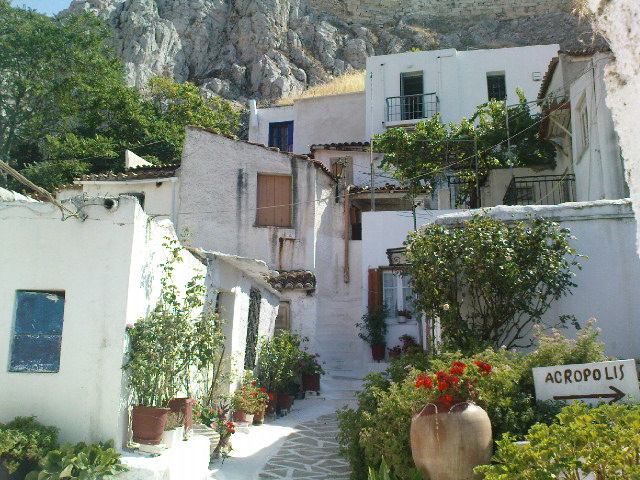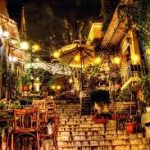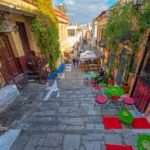By Andy Dabilis
The tiny, scenic neighborhood of Anafiotika tucked above the Plaka, just below the Acropolis, is often overlooked by visitors to Athens – and even some Athenians.
With patches of cool and quiet, Anafiotika is a hideaway for about 60 residents who want the slow life.
It was built in the 19th-Century by workers from the tiny island of Anafi in the Cyclades, hence the name. In 1841, King Otto I encouraged workers to come and help transform the new capital of independent Greece into a modern metropolis and refurbish his palace.
Carpenters and masons from the Cycladic island of Anafi came, along with other workers from the Cyclades. They took over the rocky terrain located just below the north slope of the Acropolis, hastily erecting houses that reminded them of their native islands.
The first two inhabitants were G. Damigos, carpenter and M. Sigalas, construction workers. Soon, workers from other Cycladic islands also started to arrive there, to work as carpenters or even stone and marble workers, in a further buildings reconstruction period in Athens, but also in the following era after the end of the reign of King Otto.
In 1922, immigrants from Minor East also established here, altering the population that was up to that time only from Cycladic islands.
In 1950, part of this neighborhood was destroyed for archaeologic research and in 1970 the state started to buy the houses.
Today, Anafiotika retains the charm of simple, whitewashed buildings of the island of Anafi with an irresistible lure of Bougainvillea flowers, clay pots, and roaming cats sitting in the sun.
There are only about 45 houses remaining, while the little streets from Stratonos to the Acropolis rock are still unnamed and the houses are referred to as “Anafiotika 1”, “Anafiotika 2” etc.
The neighborhood has small, cubic houses and narrow streets that that often end up to ladders or even dead-ends at terraces, places to sit and enjoy the night view of the city.
As one travel site put it: “In this oasis of tranquility, nestled beneath the walls of the Acropolis, the intensity of Athens seems miles away.”
At Anafiotika is the Church of the Panagios Taphos (the Monastery of the Holy Sepulchre) which belongs to the Brotherhood of the Holy Sepulchre in Jerusalem. It is a church characteristic of the Ottoman period which was built at the beginning of the 17th century and is dedicated to the Agioi Anargyroi. The church plays a prominent role in the Easter celebrations, as it is where the Holy Light first arrives from Jerusalem on the evening of Holy Saturday.
There is also Aghios Nikolaos Ragavas, an 11th century church that is considered one of the most important Byzantine monuments of the city and which offers a panoramic view of Athens and Lycabettus Hill.











